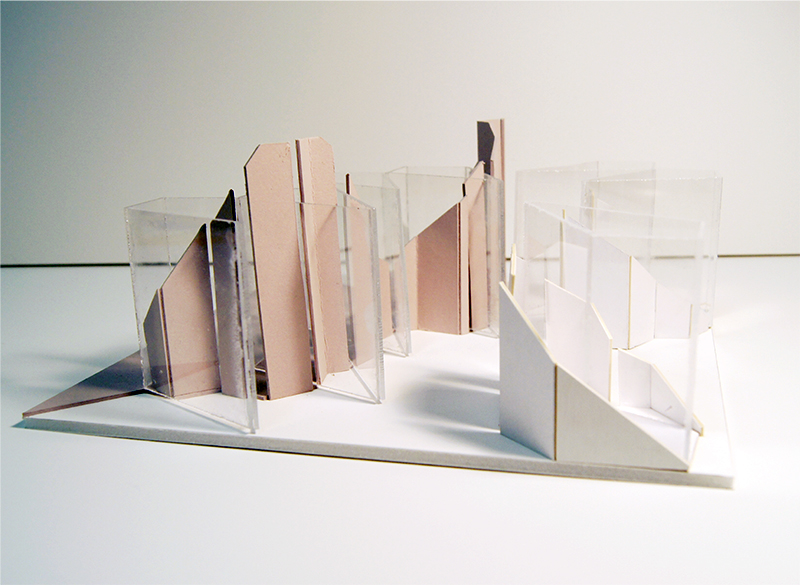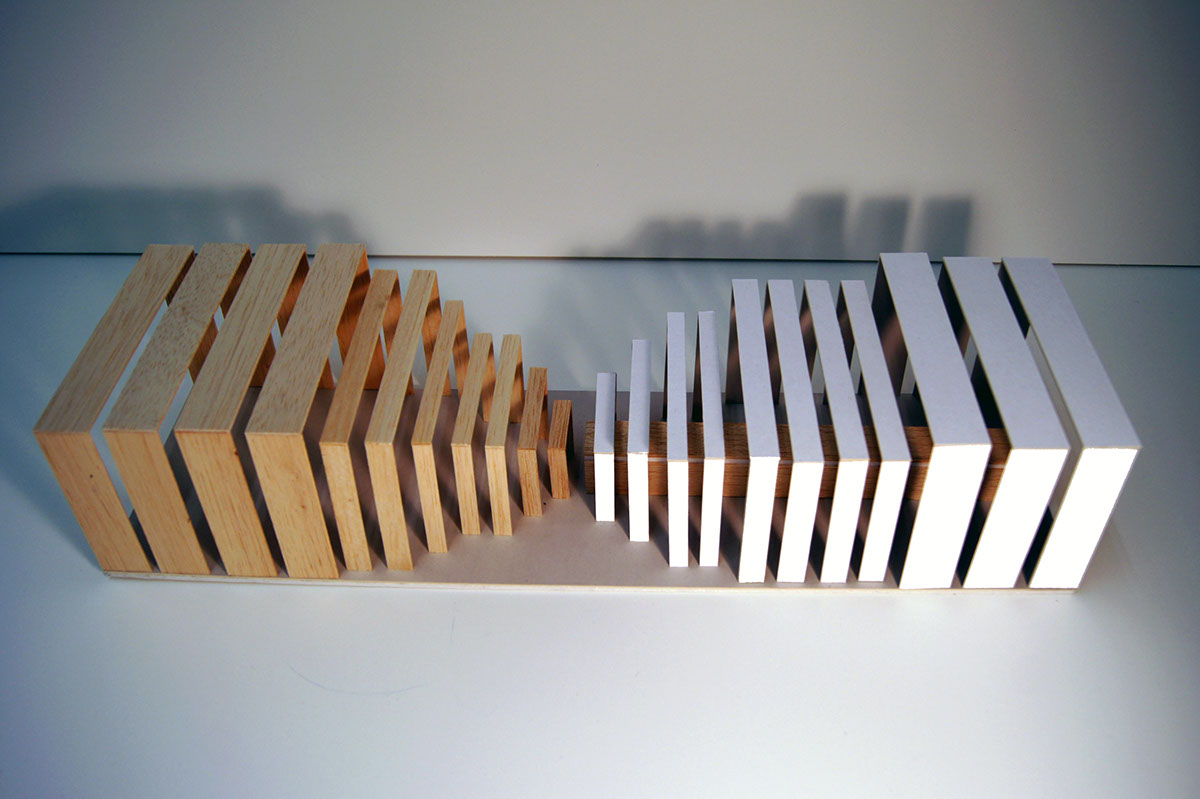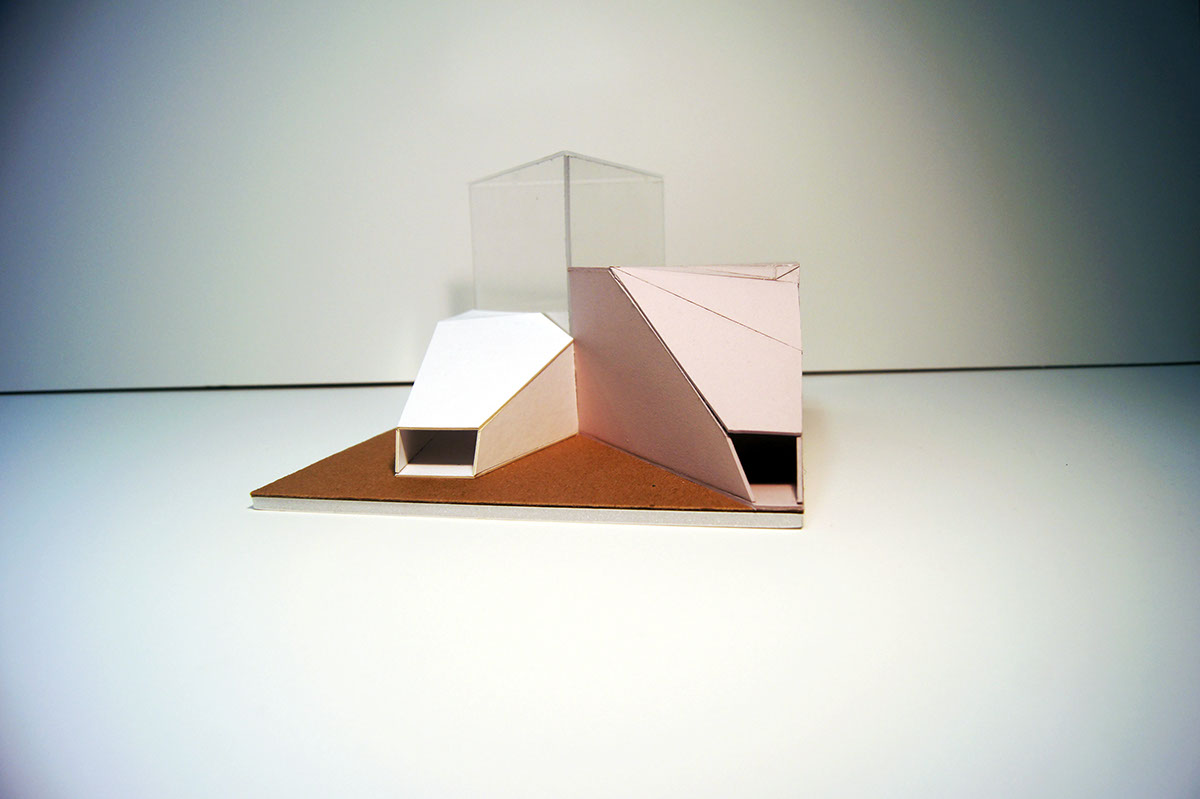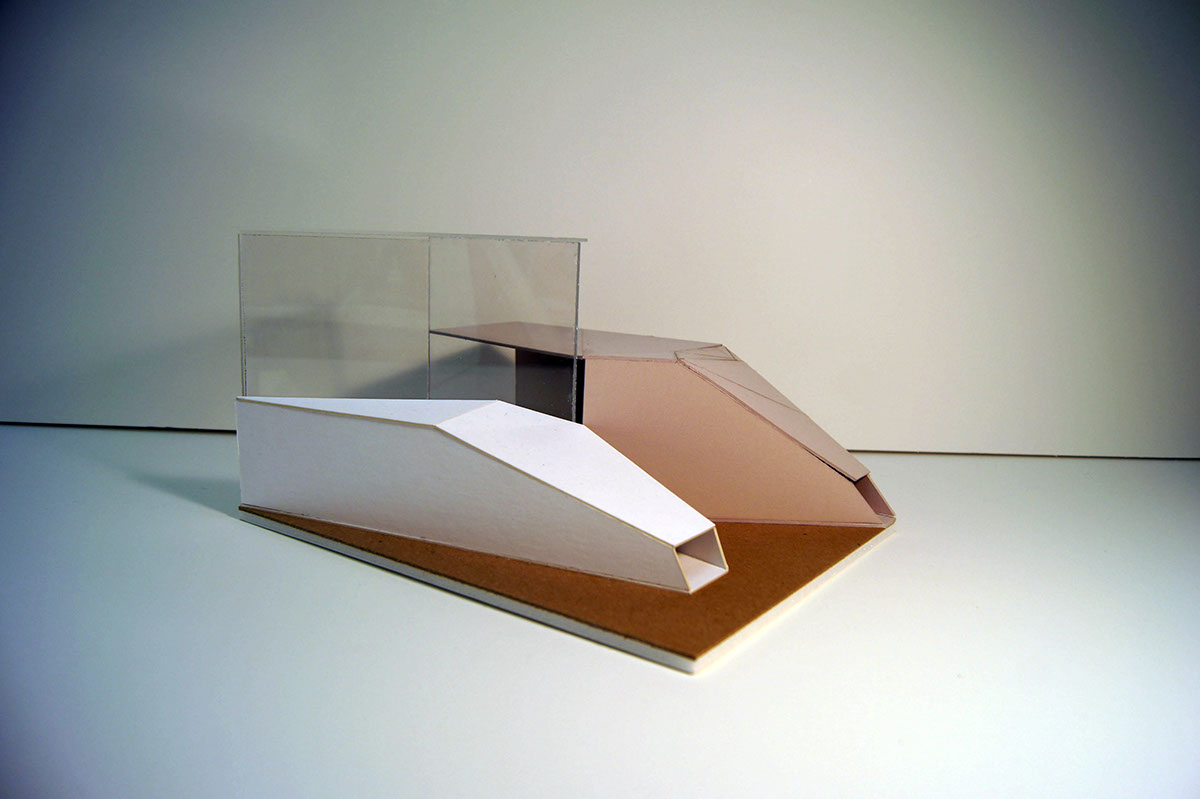
For our Fall 'Intro to Design' studio we were asked to produce a concept, based on an analysis of the game chess, that could begin to be developed into architecture. When asked to describe the game, Grand Master Mikhail Tal said that chess was a game where you took "your opponent into a deep dark forest where 2+2=5, and the path leading out is only wide enough for one". This first study model conceived of chess as an abstract space, with enough room for two to enter, and only one to leave.





As our analyses of chess developed, we were asked to spatialize our findings in 3D diagrams. This study model measures the positional power of a pawn structure used in Bobby Fischer's 1956 Game against Donald Byrne. It spatializes the offensive and defensive potential of the pawn, highlighting the sometimes invisible binary potential of the pieces in the game.



This model is a 3D study of 'convergence' in chess' game structure. By analyzing game structure in terms of available space and rate of capture, it became clear that in chess, both players are fundamentally working towards a moment of convergence, the final capture, at which point one player inevitably achieves dominance over the other.


As my research developed, I was able to specify the different types of 'convergence' that occured in chess. This study model spatializes 'Reciprocal Convergence' in chess, which occures when individual pieces work together, through positional tactics and strategy, to create new opportunities on the board.

